Therapy as an Alternative Treatment for Psychosomatic Illnesses
Author: Mark J. Sicherman | Published in: IIBA Clinical Journal - Issue: 1987 - Vol 2 - Special Number 2 | Date of publication: 1987
Click here to read the article in PDF format ...
THERAPY AS AN ALTERNATIVE TREATMENT FOR PSYCHOSOMATIC ILLNESSES
Mark J. SICHERMAN (New York Society for Bioenergetic Analysis)
Bioenergetic therapy has not yet gained a reputation as an alternative medical treatment. It Is the author's opinion that it can be used as a safe and effective treatment method for a wide variety of chronic physical disorders.
A. Introduction
My background is in pediatrics and behavioral medicine. I was certified in pediatrics in the United States in 1967 and after several years of private practice of general pediatrics I turned to the sub-specialty of developmental and behavioral pediatrics which I practiced both privately and in agency setting. I became interested in the whole area of holistic health in the mid-seventies and gradually began to study and practice behavioral medicine at first with children and then later with adult patients. I was introduced to bioenergetics at a workshop and soon found it to be an effective treatment method for my own issues and then later decided to enroll in the training program of the New York Society which I have just completed. My practice is now composed entirely of adult patients in bioenergetic therapy with me, most of whom present with psychosomatic complaints of long duration. This approach to treatment of chronic physical illness is quite rare, if not unique in the United States.
B. "Disease of Civilization"
Most common chronic illnesses today are stress-related or so-called diseases of civilization. A partial list of these diseases includes headaches such as tension and migraine; chronic nasal congestion, sinusitis, and allergies; periodontal problems and temporal mandibular joint syndrome; recurrent URI; asthma and emphysema; chronic neck and back pain; hypertension, heart disease and stroke; functional gastrointestinal disorders such as spastic colon; arthritis, and other collagen or autoimmune diseases; chronic fatigue, depression and anxiety; endometriosis and fertility problems; certain forms of cancer. Some of these disorders such as hypertension, arthritis and depression are reported to have an incidence of fifteen percent in the general population in the United States.
C. The Traditional Approach
Why does traditional Western medicine fail with these patients? I believe that Western medicine fails because of its reductionistic approach to these problems; that is, it is thought that a single agent is the cause of a specific disease which then can be treated by a specific drug or surgical procedure. This approach has been fine for classical deceases such as bacterial pneumonia, tuberculosis and is still fine for injuries and overwhelming infection but it is not appropriate for these types diseases.
Diseases of civilization are multi-factorial in origin. Some of these factors include:
- genetic or familial predisposition;
- an unhealthy life style including poor diet, lack of exercise, noxious habits such as smoking and excessive use of alcohol and other drugs, and an emphasis on doing rather than being;
- the inability to handle feelings appropriately;
- a dissolution of the extended family;
- lack of fulfillment and self-expression in our lives;
- environmental pollution of our air, food and water.
We should note also that traditional psychotherapy is not often helpful for patients with these types of diseases. I believe that the primary reason for this is that it fails to address the resistances on a physical level (blocks) which are in fact the underlying cause in most of these disorders.
All the patients I see have been seen by other pyscians with a traditional approach. Many patients say that they are at the "end of their rope". Surprisingly, many have also been seen by alternative practitioners such as chiropractors and nutritionists and while receiving transient help they have not experienced a lasting relief of their symptoms.
D. The Behavioral Medicine Approach
Before I began my training in bioenergetics I treated many of these patients in a holistic fashion as a specialist in behavioral medicine. My approach has always been a mind/body one which incorporates dietary changes, exercise programs and "stress reduction" techniques. These techniques include:
- relaxation techniques such as Jacobson’s Progressive Muscular Relaxation;
- increasing one's body awareness both external and internal;
- a wide variety of meditative techniques (I myself have been a meditator and a student of meditation for fourteen years);
- breathing techniques and exercises to enhance complete breathing;
- expressive exercises such as those commonly found in bioenergetic therapy.
I would like to illustrate this approach with four brief case histories taken from my clinical experience as a specialist in behavioral medicine.
1. J.H. is a 30-year-old female, teacher/housewife who was referred by her family physician because of symptoms associated with mitral valve prolapse. She was experiencing chest pain, PVC's, headaches and anxiety symptoms. She was on medication such as Inderal and Vistaril but was not experiencing much relief. We began at the first session with some meditative exercises and a suggestion for vigorous (aerobic) exercises. She followed up this advice at home and by the next visit, ten days later, her symptoms had decreased markedly. She continued to be mostly symptom-free though began to experience some sadness and anger as her treatment progressed (the ongoing treatment consisted of a continuation of her exercise program, meditation, superficial counselling, and standard bioenergetic exercises. She continued treatment once i week or every other week for about six months and derided to try it on her own. She returned eight months later for one follow-up visit because mild symptoms had recurred on one day only. It was clear that her recurrence of symptoms was related to a situation in which she did not express her anger. We worked on this with bioenergetic exercises and she experienced complete relief of symptoms and has not returned since that time.
2. L.H., a 33-year-old female family therapist, decided that she wanted to work with me to learn mile bioenergetic exercises because of symptoms related to a diagnosis (made post-operatively) of endometriosis. Her symptoms included infertility, severe menstrual cramps, pain in her left lower back radiating down her leg. I taught her some standard breathing techniques, some pelvic exercises, and a “giving up exercise" within two sessions. I also i night her a meditative technique. By the third session she was "totally free of pain" which she attributed mostly to the letting go exercise and to following my advice about letting her new husband comfort her when she was in pain. She wanted to know more about letting go and so we worked for two more sessions for a total of five. She remained symptom-free and at a follow-up six months later was still well.
3. J.B., a 56-year-old housewife, was self-referred because of asthma off and on for the past 7 years. Her current bout had been going on for many weeks, was rather severe, and was only moderately responsive to medication by her physician which included Marax, Isuprel and Prednisone. In addition, she was on allergic desensitization injections. On the first visit I taught her a relaxation technique and a visualization technique which brought on some soft crying which in turn brought about complete relief of her asthma at this first visit. I saw her for four more visits and she remained symptom-free and then discontinued treatment. She returned eight months later with a history of having had asthma "off and on all winter" and was now recovering from a bout of pneumonia. I suggested more long-term treatment, but she was resistant to this and never returned.
The above three cases illustrate a dramatic relief of severe symptoms by the use of a variety of techniques, but without any attempt at systematic psychotherapy. The following case of a man with rather severe multiple symptoms illustrates how short-term psychotherapy alone can also resolve physical symptoms.
R.C., a 40-year-old carpenter who was referred by his physician because of symptoms of gastrointestinal distress (gas, indigestion and a "knot" in his stomach), tachycardia, neck tension, visual disturbances, numbness of his hands and feet and low back pain. A complete medical workup was negative. He received minimum relief from a major tranquilizer. The symptoms seemed to occur exclusively at home and never at work. I saw him for eight visits during which time we simply discussed family issues. He experienced a complete relief of symptoms after which he discontinued therapy and was not seen again.
E. Longer-term Bioenergetic Intervention
It is clear that there are cases where symptom relief is dramatic using short-term behavioral medical approaches which incorporate some energetic techniques but without any attempt at character analysis. Other cases seem to require long-term therapy. For example, I saw a 50-year-old inline who suffered from severe migraine headaches, it the time I saw her she had been experiencing severe headaches daily for three out of every four weeks for the past two years. The usual behavioral medical approach as outlined above gave her no in lief of her symptoms. She agreed to begin longer-term bioenergetic therapy (this was after I had been in the bioenergetic training program for two years). Now, after two years of therapy she has only one headache, not very severe, approximately every other week. Her basic issue seems to be that of longing for her father who was incarcerated when she was four years of age. The pattern of her longing as related to her headaches seems to follow very closely the case and theoretical material presented by Dr. LOWEN in the last issue of the "Journal of Bioenergetic Analysis".
Another woman, 54 years of age, was completely relieved of her carpal tunnel syndrome with one session of bioenergetic exercises but it took three years of bioenergetic therapy to make any inroads into her rather severe long-standing asthma.
The following case illustrates how and why the "technique approach" fails when the therapist fails in recognize transference issues. R.B., a 33-year-old male PhD psychologist was referred by another patient because of a long-standing history of recurrent bouts of colitis since the age of eight, moderately severe obesity since the age of seven, gastritis for the past several months and a bout of chest pain which precipitated his phone call to me. There is a strong history in his family of coronary artery disease. The patient had had several years of group therapy and analytically oriented individual therapy in the past. I worked with him on dietary changes, exercise program and meditative techniques. His chest pain and his upper and lower gastrointestinal problems cleared quickly. We began to do some bioenergetic exercises along with the other techniques and his anger surfaced but he continued to be free of symptoms for approximately four more months. At this point we agreed to reduce treatment from once a week to once a month. Within three months he had discontinued all of his dietary changes, exercises and meditative techniques as well as all of his bioenergetic techniques which he had been doing faithfully at home, and all of his symptoms recurred. He blamed the recurrence on severe marital problems and I suggested family therapy which he agreed to but never made an appointment. He continued to see me approximately every other or every four weeks for another eighteen months. The pattern was that he felt well when things went well at home but his symptoms returned when he was under stress either at work or at home. In retrospect, I never appreciated the need to work with the transference in this patient. He had told me that he had always hated his mother who was cold and rejecting but that his father was very much like a mother to him but that his father died when the patient was twenty years of age. My error was in behaving very much as a physician towards him and suggesting a reduction in the frequency of visits as soon as his symptoms cleared and not focusing at all on the therapeutic alliance when his symptoms recurred.
F. Issues discussions
Some key questions which are raised by the clinical material cited above include the following. Why does short-term work suffice for some clients and not for others? How can we learn to recognize the client who will benefit from short-term therapy versus the one who will need longer-term work? Is this related to character structure? Are the symptoms which fail to resolve related to deeper issues? Should we look at the disease process itself? For example, in my experience the diseases which seem to require long-term therapy include arthritis, migraine, hypertension and ulcerative colitis.
Besides these clinical issues other questions, we would like to open up for discussion include the following:
- Should bioenergetic techniques be taught to other health professionals as a tool to promote healing?
- Should non-medical bioenergetic therapist treat "diseases" more directly and more openly?
- How can bioenergetics gain credibility as a safe and effective alternative or adjunct to traditional medical care?
It is my strong belief that we as bioenergetic therapists can save our patients from the ravages of dangerous and unnecessary hospitalizations, laboratory tests, surgical procedures and medications and that we can do it in a way which is personal, caring, integrated, life-affirming and even cost-effective.
Résumé from E. CREPLET, B. DOHMEN









![Therapy as an Alternative Treatment [EN] [FR]](/images/Article_Sicherman_AlternativeTreatment.png)


